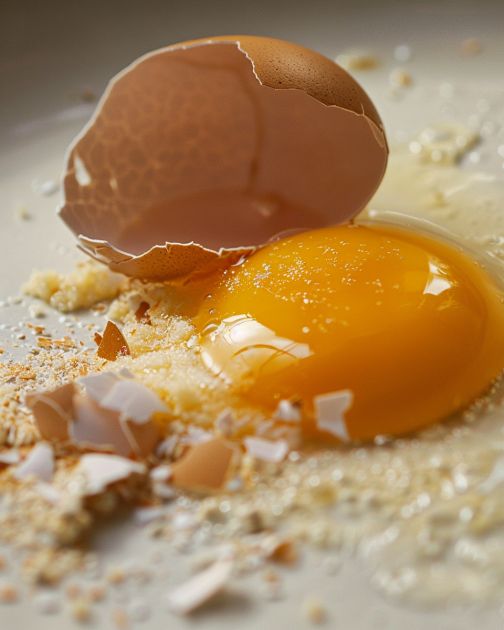
1. Familiarity: It’s a technique passed down and can feel more natural and efficient due to habit.
2. Quicker Cracking: Some find it faster since the edge provides a targeted point to crack the egg.
3. Risk of Contamination: The sharp edges of a bowl can increase the risk of shell fragments falling into the egg. Additionally, if the egg has any bacteria on the shell, like salmonella, this method can potentially bring the bacteria into contact with the egg’s contents.
A Safer Alternative: Cracking on a Flat Surface
Conversely, many professional chefs recommend tapping the egg on a flat surface, such as a countertop or a plate, before breaking it open. Below are several reasons to consider this method:
1. Fewer Shell Fragments: Cracking an egg against a flat surface is less likely to drive shell shards into the egg.
2. Reduced Bacterial Risk: The gentler break is less likely to force shell pieces and potential bacteria into the egg contents.
3. Precision Control: Using a flat surface might give you more control over the fracture, leading to a cleaner break.
So, Who’s Right?
The habit of cracking eggs on the bowl’s edge isn’t incorrect per se, but it does pose some risks that are important to consider. Here are the key takeaway points that might help in deciding which method is preferred:
1. Tradition doesn’t always mean optimal. While your hubby’s method is a familial tradition, it might be worth reconsidering in light of potential downsides.
2. Food safety should be paramount. Cracking eggs on a flat surface reduces the risk of shell fragments and bacterial contamination, making it a safer practice overall.
3. Not all eggs are created equal. Depending on the freshness and quality of the egg, some methods might work better than others.
4. Personal preference plays a role. Ultimately, the best method might come down to what feels most comfortable and convenient for the person doing the cracking.
It’s clear that both methods have their proponents. However, from a food safety perspective, cracking eggs on a flat surface appears to be the safer way to avoid shell fragments and the potential spread of bacteria. The ‘right’ method may come down to the balance between tradition and safety, convenience and precision. In the kitchen, as with many areas of life, the best approach often lies in finding a middle ground that honors the past while embracing best practices for the present.
